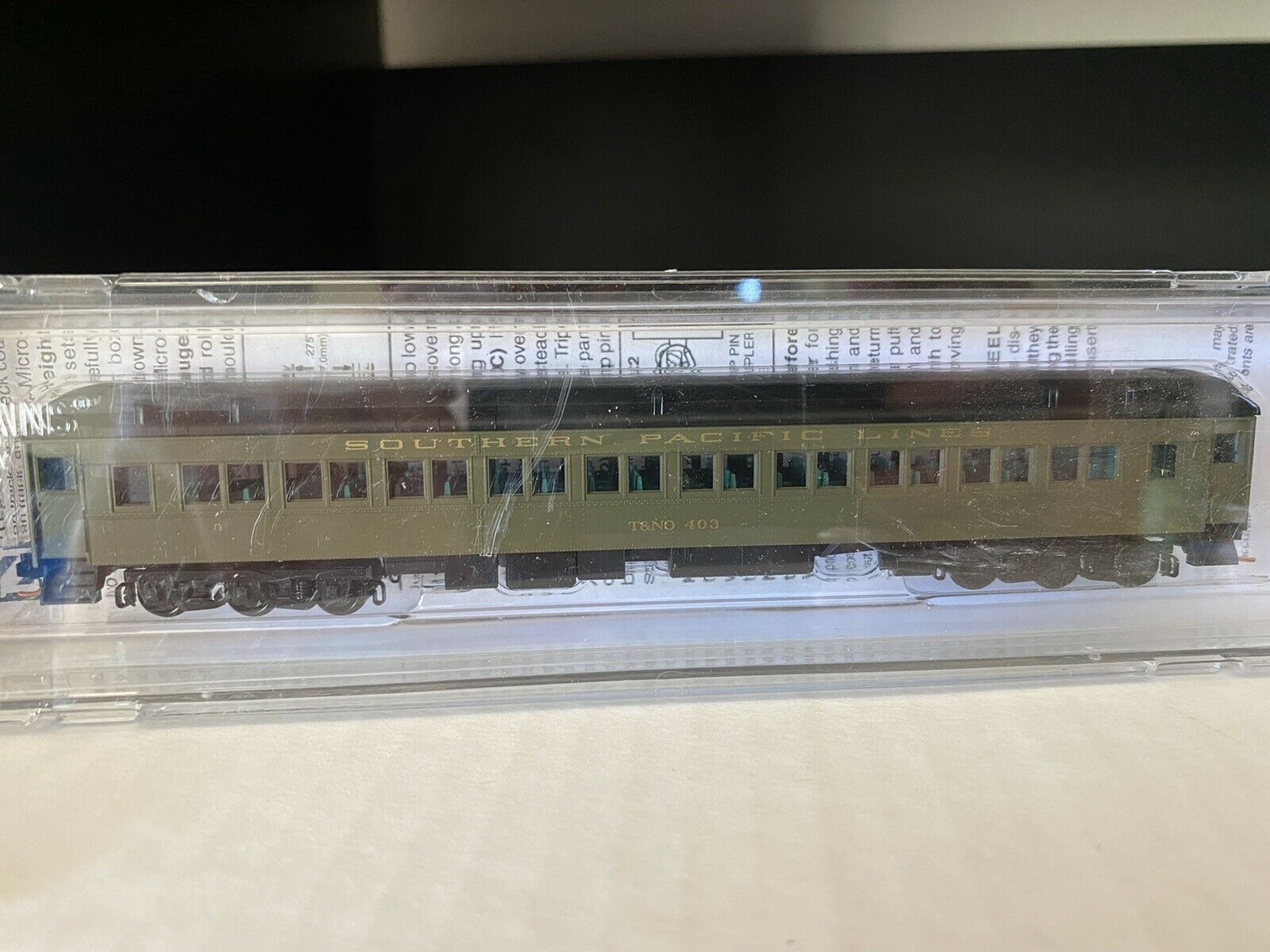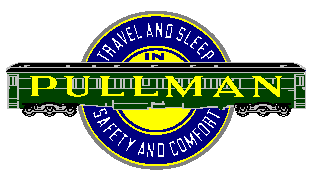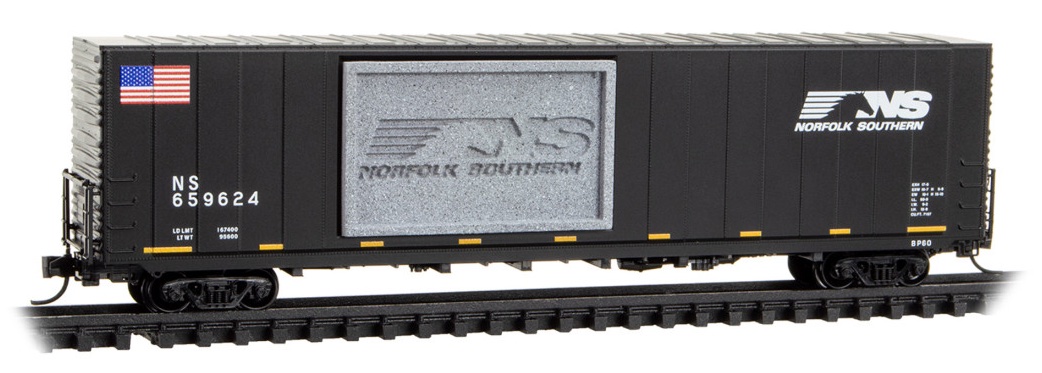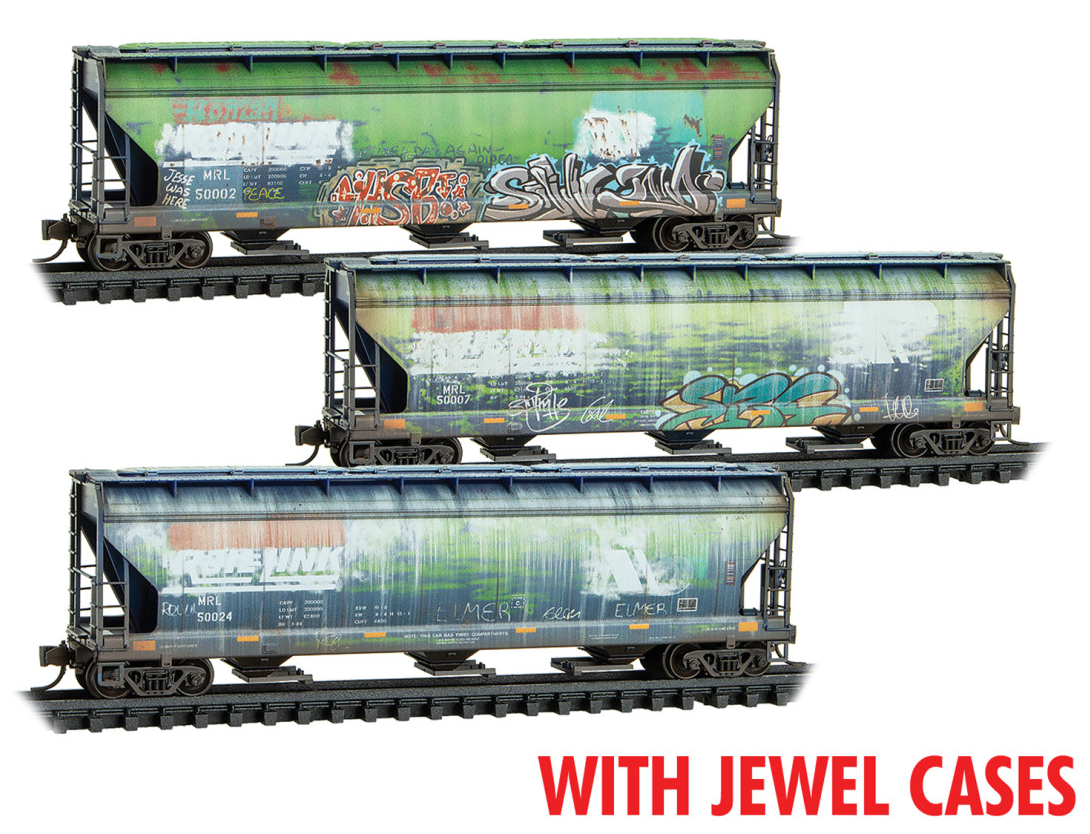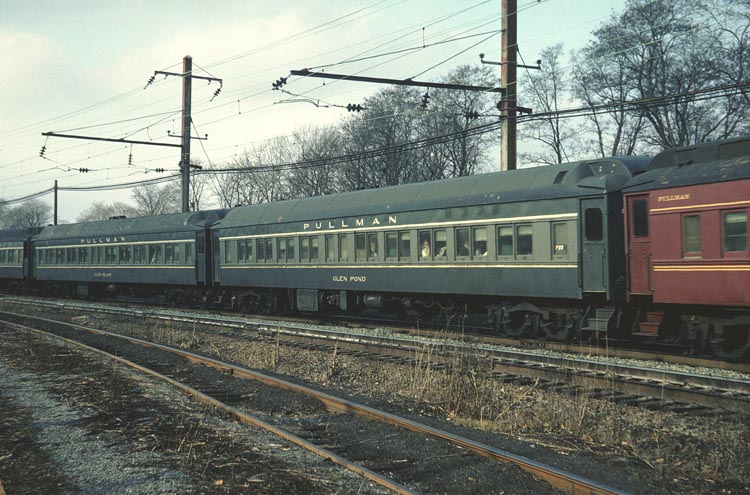Specific Item Information: Southern Pacific
Prototype History: Pullman was the leading producer of heavyweight coaches during the 1st half of the twentieth century. They were known for the quality and luxury of the passenger cars. The coaches were a common sight on heavyweight consists during 1920s and 1930s. Though less glamorous than Pullman’s many types of sleeper cars, 78-foot coaches like these were common on railroads across the country in the steam era.
Plan 2882-B was developed specifically for the Baltimore & Ohio railroad. Thanks to steel rationing in World War II and the booming demand for passenger service after the war, many of these cars saw service long into the steam-to-diesel transition era. While some were relegated to branch lines or commuter service, others were modernized with smooth sides, closed vestibules, and streamlined roofs.
Plan 2882-B was developed specifically for the Baltimore & Ohio railroad. Thanks to steel rationing in World War II and the booming demand for passenger service after the war, many of these cars saw service long into the steam-to-diesel transition era. While some were relegated to branch lines or commuter service, others were modernized with smooth sides, closed vestibules, and streamlined roofs.
Road Name History: 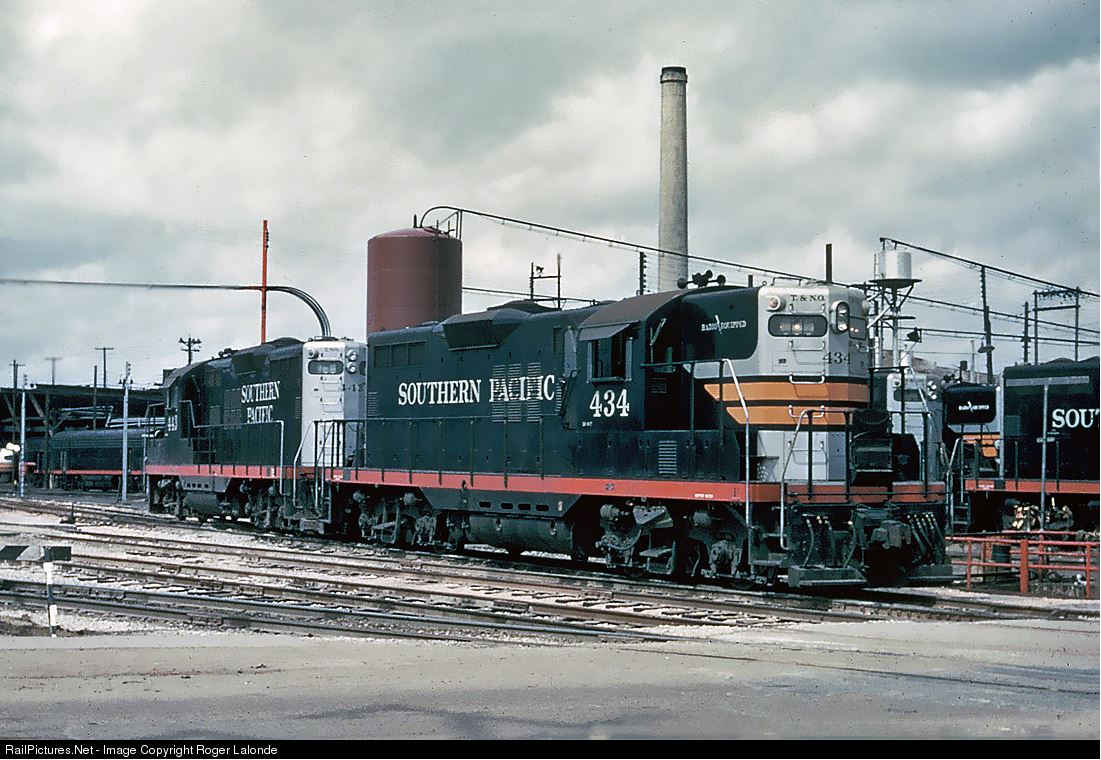 The T&NO was chartered in 1856 as the Sabine & Galveston Bay Railroad & Lumber Company but adopted the T&NO name three years later after their goals had changed to linking New Orleans with Houston. They built a 5’6” gauge line between Houston and Orange, Texas before progress was halted first by the Civil War, then by the washout of the Trinity River Bridge which was followed by receivership and sale. In 1876, full operations resumed and the line was standard-gauged. New Orleans was finally reached in 1880. Southern Pacific bought control of T&NO in 1881 as part of a program to acquire smaller lines in Texas. Under SP ownership, T&NO merged other lines and built new ones, culminating in the 1934 mass consolidation of all of Southern Pacific’s subsidiaries east of El Paso. The following railroads were merged into Texas & New Orleans that year: Dayton-Goose Creek Rwy.; Franklin & Abbeville; Galveston Harrisburg & San Antonio; Houston & Shreveport; Houston & Texas Central; Houston East & West Texas; Iberia & Vermillion; Lake Charles & Northern; Louisiana Western; Morgan’s Louisiana & Texas Railroad & Steamship Company; San Antonio & Aransas Pass; and Texas Midland. The result was a 3,713 mile T&NO – the new largest railroad in Texas. While T&NO reporting marks were used, Southern Pacific or Southern Pacific Lines got top billing on tenders and rolling stock. In the diesel age, locomotives wore SP style paint. If you can’t quite find the small T&NO reporting marks on their diesels, just look at the road number. Number 2 through 725 on the SP system belong to Texas & New Orleans. In November of 1961, T&NO was finally merged into Southern Pacific.
The T&NO was chartered in 1856 as the Sabine & Galveston Bay Railroad & Lumber Company but adopted the T&NO name three years later after their goals had changed to linking New Orleans with Houston. They built a 5’6” gauge line between Houston and Orange, Texas before progress was halted first by the Civil War, then by the washout of the Trinity River Bridge which was followed by receivership and sale. In 1876, full operations resumed and the line was standard-gauged. New Orleans was finally reached in 1880. Southern Pacific bought control of T&NO in 1881 as part of a program to acquire smaller lines in Texas. Under SP ownership, T&NO merged other lines and built new ones, culminating in the 1934 mass consolidation of all of Southern Pacific’s subsidiaries east of El Paso. The following railroads were merged into Texas & New Orleans that year: Dayton-Goose Creek Rwy.; Franklin & Abbeville; Galveston Harrisburg & San Antonio; Houston & Shreveport; Houston & Texas Central; Houston East & West Texas; Iberia & Vermillion; Lake Charles & Northern; Louisiana Western; Morgan’s Louisiana & Texas Railroad & Steamship Company; San Antonio & Aransas Pass; and Texas Midland. The result was a 3,713 mile T&NO – the new largest railroad in Texas. While T&NO reporting marks were used, Southern Pacific or Southern Pacific Lines got top billing on tenders and rolling stock. In the diesel age, locomotives wore SP style paint. If you can’t quite find the small T&NO reporting marks on their diesels, just look at the road number. Number 2 through 725 on the SP system belong to Texas & New Orleans. In November of 1961, T&NO was finally merged into Southern Pacific.

Brand/Importer Information: Micro-Trains is the brand name used by both Kadee Quality Products and Micro-Trains Line. For a history of the relationship between the brand and the two companies, please consult our Micro-Trains Collector's Guide.
Manufacturer Information:  Micro-Trains Line split off from Kadee Quality Products in 1990. Kadee Quality Products originally got involved in N-Scale by producing a scaled-down version of their successful HO Magne-Matic knuckle coupler system. This coupler was superior to the ubiquitous 'Rapido' style coupler due to two primary factors: superior realistic appearance and the ability to automatically uncouple when stopped over a magnet embedded in a section of track. The success of these couplers in N-Scale quickly translated to the production of trucks, wheels and in 1972 a release of ready-to-run box cars.
Micro-Trains Line split off from Kadee Quality Products in 1990. Kadee Quality Products originally got involved in N-Scale by producing a scaled-down version of their successful HO Magne-Matic knuckle coupler system. This coupler was superior to the ubiquitous 'Rapido' style coupler due to two primary factors: superior realistic appearance and the ability to automatically uncouple when stopped over a magnet embedded in a section of track. The success of these couplers in N-Scale quickly translated to the production of trucks, wheels and in 1972 a release of ready-to-run box cars.
Micro-Trains Line Co. split off from Kadee in 1990 to form a completely independent company. For this reason, products from this company can appear with labels from both enterprises. Due to the nature of production idiosyncrasies and various random factors, the rolling stock from Micro-Trains can have all sorts of interesting variations in both their packaging as well as the products themselves. When acquiring an MTL product it is very important to understand these important production variations that can greatly enhance (or decrease) the value of your purchase.
Please consult our Micro-Trains Collector's Guide

Micro-Trains Line Co. split off from Kadee in 1990 to form a completely independent company. For this reason, products from this company can appear with labels from both enterprises. Due to the nature of production idiosyncrasies and various random factors, the rolling stock from Micro-Trains can have all sorts of interesting variations in both their packaging as well as the products themselves. When acquiring an MTL product it is very important to understand these important production variations that can greatly enhance (or decrease) the value of your purchase.
Please consult our Micro-Trains Collector's Guide
Item created by: Lethe on 2015-05-31 17:46:30. Last edited by gdm on 2020-09-07 06:43:49
If you see errors or missing data in this entry, please feel free to log in and edit it. Anyone with a Gmail account can log in instantly.
If you see errors or missing data in this entry, please feel free to log in and edit it. Anyone with a Gmail account can log in instantly.


